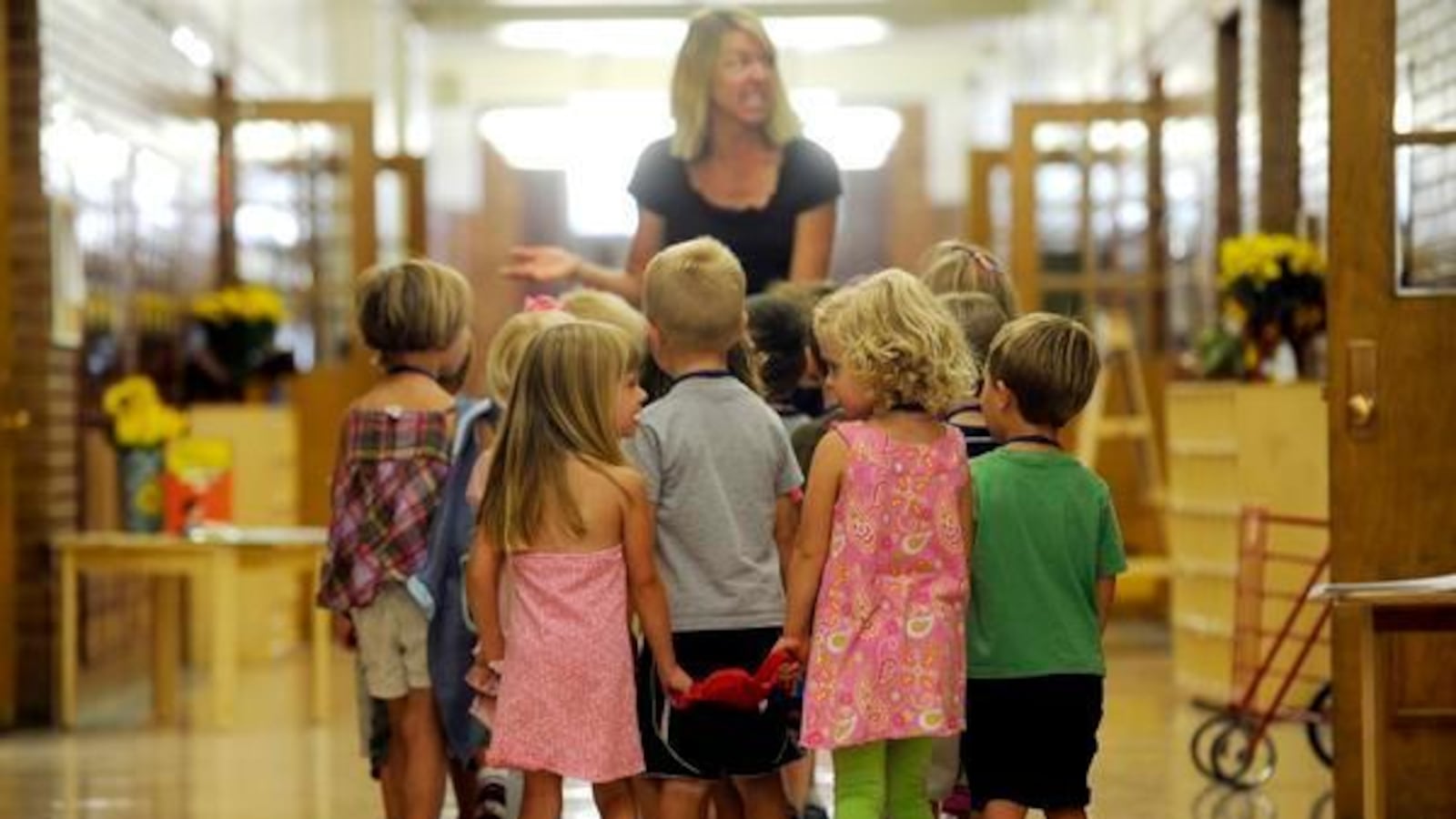The Denver school district has asked additional affluent schools to join a pilot program to give preference to poor students who want to “choice in” to them.
Denver Public Schools is not requiring affluent schools to join. Rather, officials have invited nine more schools where fewer than 40 percent of students qualify for free or reduced-price lunch to consider it. Districtwide, about two-thirds of students qualify.
The district first asked schools to participate two years ago. Just six elementary schools and one high school agreed, and the impact on student diversity was modest at most of them. Despite that limitation, a committee of community leaders recently recommended expanding the pilot as one piece of the district’s larger response to the segregating effects of gentrification.
“It’s fair to say we’re in a time period where the demographics of this city are shifting,” Superintendent Tom Boasberg said at a press conference Tuesday at McAuliffe International School. “Communities are acutely concerned that as demographics shift, that as we see more gentrification, that diversity that is such a pride and a strength in our schools is not lost.”
At the seven schools that previously signed on, the pilot worked like this: After the schools enrolled students who live within their boundaries, they prioritized accepting non-boundary students from low-income families who listed the school as a top choice. Denver has universal school choice, which means students can request to attend any school in the district.
The results have been mixed. The prioritization made little difference in diversifying small elementary schools where most seats were filled with students who live within the boundaries, said Brian Eschbacher, the district’s executive director of planning and enrollment services.
It had a bigger effect at East High School, the district’s most requested school, which accepts hundreds of choice students each year. As a result of the pilot, every eighth-grader from a low-income family who applied for a spot in this year’s freshman class was admitted, Eschbacher said. In the past, those students would have been put into a lottery with more affluent students. Prioritizing them guaranteed them a spot rather than leaving it to chance.
Next year, East High will go a step further. Instead of simply giving poor students preference, it will set aside 35 percent of all ninth-grade seats for them, Eschbacher said.
Two other schools – High Tech Elementary and Inspire Elementary – will take the same aggressive approach and set aside 25 percent of kindergarten seats, he said. The two schools were not among the seven that opted into the pilot but are part of a district “enrollment zone” that also prioritizes students from low-income families who want to choice in.
Inspire Elementary just opened this year, and Principal Marisol Enriquez said she wants to capitalize on the fact that the school is not yet full to set expectations around diversity.
“It’s a prime opportunity for us to seize the moment,” she said.
The nine schools the district asked to join the pilot are Bromwell, Steck, Lincoln, University Park, Teller, Southmoor, Bradley, and Brown elementary schools, and Stephen Knight Center for Early Education, which serves students in preschool and kindergarten.
The district targeted those schools based on the number of choice seats they had in kindergarten last year, Eschbacher said. Other affluent schools that historically have had fewer open seats can also join the pilot, but the district considers them a lower priority, he said.
The schools have until Feb. 1 to make a decision. Boasberg called the pilot a “bottom-up, student- and parent- and educator-driven” initiative, and said the idea is for communities to decide whether they want to participate.
“In each case, we want to make sure the school community is having a thoughtful and deep discussion,” he said. If they request to join, he added, “Our answer is, ‘Hallelujah.’”
McAuliffe International, the high-performing middle school that hosted the press conference, has already signed on. Just 18 percent of its more than 1,150 students currently qualify for free or reduced-price lunch. Principal Kurt Dennis said the school is aiming to increase that to 30 percent over the next several years by giving priority to poor students.
McAuliffe is in high demand from the students who live within its boundary, but Dennis said the school was able to accept 65 choice students from other neighborhoods this year.
“Our goal is to match the diversity of the region,” he said.
Some Denver schools already give enrollment priority to students from low-income families. They include charter schools that have long prized integration, and schools within some district enrollment zones, which are enlarged boundaries with several schools in them.
The district’s school choice process starts next month.

